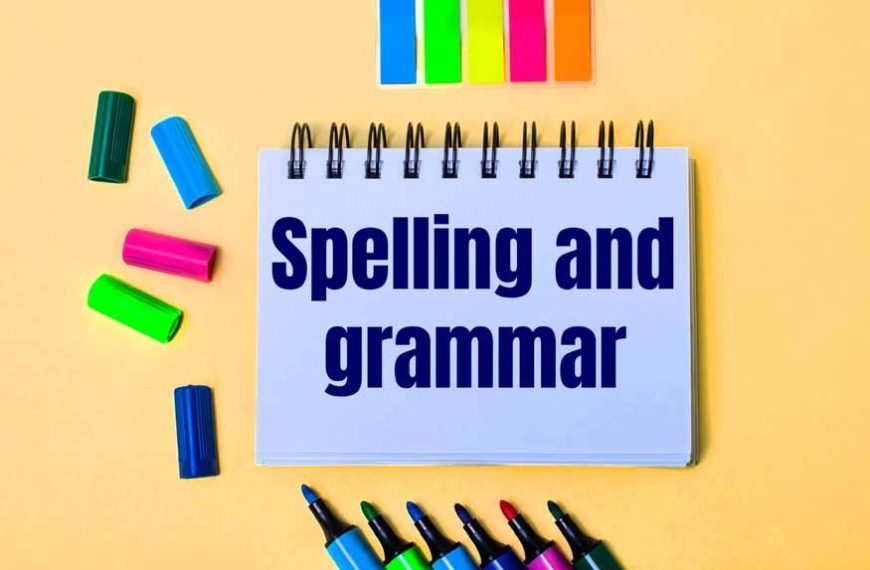Language is a rich tapestry woven with words, each thread contributing to the intricate design of expression. Among the many tools at a writer’s disposal, metaphor stands out as a dazzling gem, adding depth, color, and nuance to communication. In this exploration, we will delve into the definition, meaning, and art of using metaphors, accompanied by illuminating examples that showcase their transformative power.
Unveiling the Essence of Metaphor:
Definition and Origins:
At its core, a metaphor is a figure of speech that involves the comparison of two unlike things to highlight a shared characteristic. The word itself is derived from the Greek “metapherein,” meaning “to transfer” or “to carry across.” This etymology encapsulates the essence of metaphor—a linguistic vehicle transporting meaning from one concept to another.
Since ancient times, metaphors have played a crucial role in human communication. Metaphorical expression has its origins in the earliest stages of language development, when individuals were looking for creative ways to describe their ideas and experiences. Metaphors were powerful devices used in ordinary speech, rhetoric, and literature as language developed.
The Power of Figurative Language:
Metaphors serve as bridges between the abstract and the concrete, allowing individuals to grasp complex ideas through familiar imagery. By imbuing language with sensory experiences and vivid comparisons, metaphors create a more profound impact on the listener or reader. They transcend the boundaries of literal expression, unlocking a realm of emotions, thoughts, and understanding.
Consider the following metaphorical expressions:
“Time is a thief.”In this metaphor, time is not literally a thief, but the comparison conveys the idea that time, like a thief, steals moments and experiences from our lives. This imagery elicits a visceral response, instilling a sense of urgency and impermanence.
“The world is a stage.”Coined by William Shakespeare in “As You Like It,” this metaphor suggests that life is akin to a theatrical production. Each person plays a role, and the stage serves as a metaphor for the world where our actions unfold. This metaphor has permeated cultural consciousness, emphasizing the performative nature of existence.
Decoding the Layers of Metaphorical Meaning:
- Literal vs. Figurative Language:
- Types of Metaphors:
- Visual Metaphors:
- Conceptual Metaphors:
- Dead Metaphors:
- Extended Metaphors:
It’s critical to distinguish between literal and figurative language in order to appreciate the power of metaphors. Whereas figurative language deviates from the literal sense of words in favour of creative and expressive phrases, literal language closely follows the accepted meaning of words.
Metaphors fall into the realm of figurative language, offering a departure from the literal to convey abstract concepts or emotions more vividly. By invoking images, sensations, and emotions, metaphors elevate language from a mere conveyance of information to a nuanced art form.
Metaphors manifest in various forms, each catering to different communicative needs. Some common types include:
These metaphors rely on imagery to convey abstract ideas. For example, “He had a heart of stone” uses the visual image of a heart made of stone to suggest emotional coldness.
Conceptual metaphors are more complex, mapping one idea or concept onto another. An example is the metaphor of “time as money,” where time is conceptualized as a valuable resource that can be spent or wasted.
These are metaphors that have become so ingrained in everyday language that their metaphorical origin is often forgotten. For instance, “the foot of the mountain” originally invoked a metaphorical comparison between the base of a mountain and a foot.
Extended metaphors unfold over several lines or even an entire piece of writing, weaving a sustained comparison between two disparate concepts. John Donne’s “A Valediction: Forbidding Mourning” employs an extended metaphor likening the lovers to the legs of a compass, connected yet able to move independently.
Understanding these nuances allows writers to wield metaphors with precision, selecting the type that best serves their communicative purpose.
Mastering the Art of Metaphorical Expression:
- How to Craft Effective Metaphors:
- Know Your Audience:
- Draw from Personal Experience:
- Invoke the Senses:
- Balance Familiarity and Creativity:
Creating impactful metaphors requires a keen understanding of the subjects being compared and the message one aims to convey. Here are key considerations for crafting effective metaphors:
Consider the cultural and contextual background of your audience. Metaphors are most potent when they resonate with the experiences and understanding of the intended readers or listeners.
Authenticity enhances the power of metaphors. Drawing from personal experiences or observations adds a layer of genuineness that can resonate deeply with others.
Engage the reader’s or listener’s senses by incorporating sensory details into your metaphors. This not only makes the comparison more vivid but also taps into a more visceral and emotional response.
While metaphors should be inventive, they should not be so obscure that their meaning becomes lost. Strive for a balance between creativity and familiarity to ensure that your metaphor is both unique and accessible.
Examples of Masterful Metaphors:
- “Time is a Thief” – Margaret Atwood:
- “All the world’s a stage” – William Shakespeare:
- “The world is a book, and those who do not travel read only a page” – Saint Augustine:
In Atwood’s metaphor, time is not merely a chronological concept but a character with the nefarious intent of stealing precious moments. This metaphor captures the universal sentiment of the fleeting nature of time.
Shakespeare’s metaphorical assertion that “All the world’s a stage” is a profound commentary on the performative nature of human existence. It encapsulates the idea that individuals play various roles throughout their lives, each stage representing a different phase.
Augustine’s metaphor compares the world to a book, suggesting that the full richness of life is only experienced through exploration and travel. This metaphor has resonated across centuries, inspiring countless individuals to embrace the diversity of the world.
Metaphors Across Disciplines:
- Metaphors in Literature:
- Metaphors in Science:
- Metaphors in Everyday Language:
- The Role of Metaphors in Cognitive Processes:
- Conceptual Metaphor Theory:
Literature, with its emphasis on language and expression, is a fertile ground for the exploration and mastery of metaphors. From the poetic verses of Emily Dickinson to the philosophical prose of Albert Camus, metaphors infuse literary works with layers of meaning and complexity.
Consider Emily Dickinson’s metaphor: “Hope is the thing with feathers.”
This metaphorical comparison of hope to a bird with feathers conveys the delicate yet resilient nature of hope. The imagery evokes a sense of lightness, fragility, and the capacity to soar above adversity.
Metaphors transcend the boundaries of literature and find a place in scientific discourse. The use of metaphors to clarify difficult ideas and make them more understandable to a wider audience has gained popularity in science, which has historically been seen as a champion of objectivity and accuracy. As linguistic bridges, metaphors help close the gap between the general public’s comprehension and the intricacies of scientific phenomena. In this exploration, we delve into the role of metaphors in scientific discourse, examining how these figurative devices enhance comprehension and engagement.
Metaphors are common in everyday language and are not just found in literary and scientific contexts. Consider platitudes such as “you have the ball,” “time is money,” or “he has a golden heart.” People usually overlook the metaphorical significance of these metaphors since they are used so regularly in conversation.
Metaphors have important cognitive roles in addition to their aesthetic and expressive ones. Cognitive science studies how metaphorical thinking affects our ability to perceive, comprehend, and solve problems.
Pioneered by George Lakoff and Mark Johnson, the Conceptual Metaphor Theory posits that metaphor is not merely a linguistic device but a fundamental aspect of human thought. According to this theory, abstract concepts are often understood and structured through metaphorical mappings onto more concrete experiences.
For example, the metaphor of “time as money” involves a conceptual mapping where the abstract concept of time is understood and structured in terms of the more concrete concept of money. This metaphor influences how people perceive and talk about time, viewing it as a resource that can be spent, saved, or wasted.
Embodied Cognition and Metaphor:
Embodied cognition, another area of cognitive science, explores the interconnection between the mind and the body in shaping human experience. Metaphors often draw on bodily experiences to convey abstract concepts, revealing the intricate link between physical sensations and abstract understanding.
Consider the metaphor “feeling down.” This expression metaphorically links a state of sadness or depression to a downward physical movement. This metaphorical connection between emotional states and spatial orientation reflects the embodied nature of our understanding of emotions.
Challenges and Critiques of Metaphor Usage:
While metaphors are powerful tools of expression, they are not without their challenges and critiques. Here are some considerations:
- Risk of Misinterpretation:
- Cultural Sensitivity:
- Overreliance and Clichés:
- Harnessing the Power of Metaphors:
Metaphors are subjective, and their interpretation can vary among individuals. What is clear and evocative to one person may be confusing or misleading to another.
Metaphors often rely on cultural references, and what is familiar in one culture may be alien in another. Writers must be mindful of cultural differences to ensure that their metaphors resonate appropriately.
Overusing metaphors or relying on clichéd expressions can dilute their impact. Writers should strive for freshness and originality to engage readers effectively.
In the intricate tapestry of language, metaphors stand as vibrant threads, weaving together disparate concepts to create a richer, more nuanced understanding of the world. From the poetic verses of literary giants to the scientific discourse of scholars, metaphors serve as bridges between the abstract and the concrete, the known and the unknown.
Let’s acknowledge the transforming power of metaphors as we traverse the domains of literature, science, and ordinary communication. In addition to enhancing the beauty of language, mastering the skill of metaphorical expression allows us to explore the depths of the human brain, where metaphors influence our perception, comprehension, and experience of the outside world.
In the words of metaphorical brilliance, let us continue to paint the canvas of communication with the vivid hues of metaphor, unlocking the boundless potential of figurative language in our journey of expression and exploration.
For more such interesting blogs, Visit EuroKids















